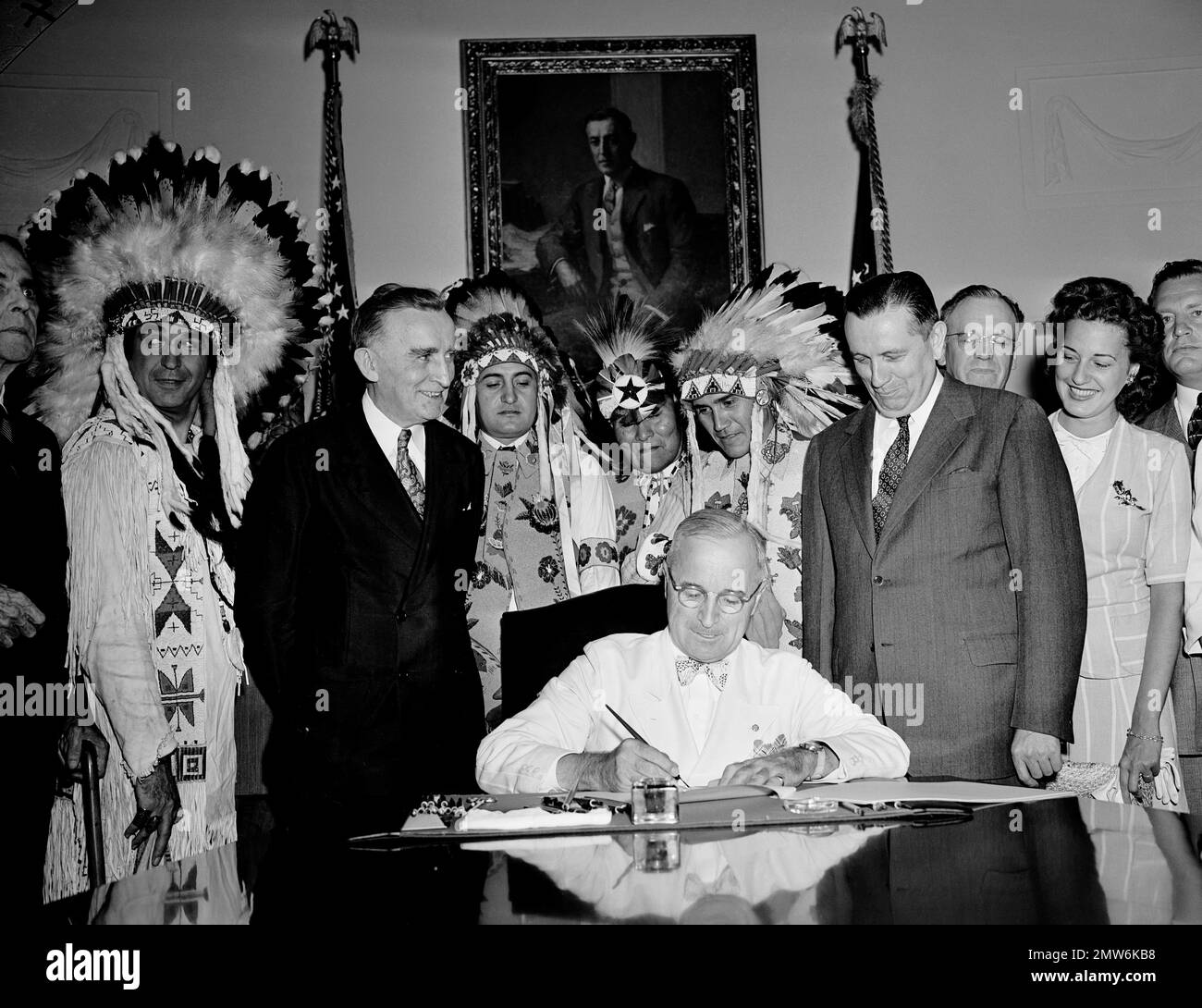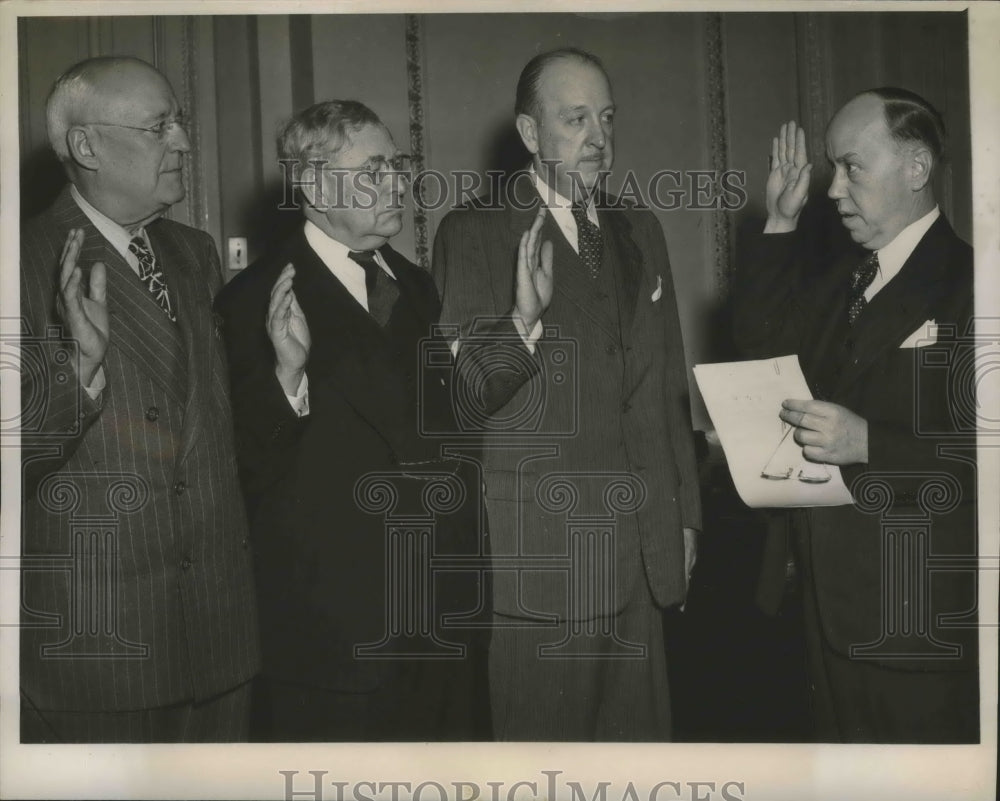
The Long Reckoning: America’s Decades-Long Attempt to Settle Native American Land Claims
In the annals of American history, the relationship between the federal government and its Indigenous peoples has been a tapestry woven with broken promises, land seizures, and profound injustice. For centuries, the expansion of the United States was predicated on the displacement and subjugation of Native nations, often through force, deceptive treaties, or outright theft. By the mid-20th century, as the nation emerged from the Second World War with a renewed sense of global responsibility and a critical eye toward its own internal affairs, the lingering specter of these historical wrongs became increasingly difficult to ignore. It was in this context that the U.S. Congress, after decades of debate, established the Indian Claims Commission (ICC) in 1946 – an ambitious, yet ultimately controversial, attempt to finally settle the myriad of grievances held by Native American tribes against the government.
The Indian Claims Commission Act of 1946 was not merely a legislative footnote; it represented a watershed moment, a formal acknowledgement by the federal government that it had indeed committed grievous wrongs against Indigenous peoples. For the first time, a dedicated judicial body was created solely to hear and adjudicate historical claims, offering tribes a legal avenue to seek compensation for lands taken without adequate payment, treaty violations, and other breaches of faith. This was a radical departure from previous practices, where Native claims were often relegated to the political arena or the highly restrictive U.S. Court of Claims, which required a special act of Congress for each individual case to be heard.
The roots of the ICC lay deep in the complex history of U.S.-Indian relations. From the earliest colonial encounters, land was the central point of contention. Treaties, often signed under duress or misunderstanding, were routinely abrogated or ignored as American settlers pushed westward. The Dawes Act of 1887, which sought to break up tribal landholdings into individual allotments, further dispossessed Native peoples of millions of acres. By the early 20th century, the federal government had amassed a staggering moral and legal debt, with tribes across the country clamoring for redress.
Prominent legal scholars and advocates, notably Felix S. Cohen, a key architect of the Indian Reorganization Act of 1934 and a leading authority on federal Indian law, played a crucial role in advocating for a comprehensive claims process. Cohen argued passionately that the United States had a moral and legal obligation to address these outstanding claims, not just as a matter of justice but also to clear the slate for a more constructive future relationship. The prevailing sentiment among many policymakers was that resolving these claims would not only "right old wrongs" but also, perhaps more pragmatically, streamline federal Indian policy and potentially pave the way for a future "termination" of tribal status, freeing the government from its trust responsibilities. This dual motivation – justice and expediency – would ultimately define the ICC’s complex legacy.
The Indian Claims Commission Act authorized tribes, bands, or other identifiable groups of American Indians to file claims against the United States for a wide range of grievances dating back to "time immemorial" or the earliest contact. These included claims for lands taken without compensation, inadequate compensation for lands, breaches of treaties, unauthorized taking of tribal property, and even for claims based on "fair and honorable dealings" that were not necessarily rooted in specific legal or treaty provisions. This last clause, Section 2, Clause 5 of the Act, was particularly innovative, providing a broad legal basis for claims that might otherwise have been dismissed on technicalities.

Upon its establishment, the ICC was inundated with claims. Over a five-year period, more than 600 dockets were filed, representing nearly every recognized tribe in the continental United States. The commission quickly became a vast undertaking, employing a corps of commissioners, lawyers, historians, and anthropologists. The process was, by its very nature, incredibly complex and arduous. Tribes had to meticulously document their historical land use, often going back centuries, relying on oral histories, obscure government records, and anthropological studies to prove aboriginal title. They then had to demonstrate that these lands were taken without adequate compensation, a task that required expert economists to value land at the time of its taking – often a century or more in the past, when land values were dramatically lower than in the 20th century.
The adversarial nature of the proceedings meant that tribes were essentially suing the federal government, which itself was represented by the Department of Justice. This often put tribes at a significant disadvantage, as they lacked the vast resources of the federal government. Cases dragged on for years, sometimes decades, outliving the original claimants and even the commissioners themselves. The commission itself was not without its internal struggles, facing criticism for its slow pace, the immense backlog of cases, and the often-paternalistic approach to Native rights.
One of the most profound and contentious aspects of the ICC’s work was its mandate to provide monetary compensation, not the return of land. For many Native nations, land is not merely a commodity; it is intrinsic to their cultural identity, spiritual beliefs, and very existence. The idea of "selling off" their heritage, even for significant sums, was deeply unsettling and often seen as an inadequate form of justice. While the awards, totaling over $800 million by the time the commission closed, represented substantial sums for the time, they could never fully compensate for the irreplaceable loss of ancestral lands and the disruption of traditional ways of life.
A notable example of the ICC’s work, though the final resolution came after its dissolution, is the Black Hills claim brought by the Sioux Nation. The Sioux argued that the United States had unlawfully seized their sacred lands in violation of the 1868 Fort Laramie Treaty. The ICC heard the initial arguments, and while the Sioux were eventually awarded over $100 million (including interest) by the U.S. Supreme Court in 1980, they famously refused the payment, maintaining their demand for the return of the land itself. This case powerfully illustrates the fundamental disconnect between the government’s approach of monetary compensation and the Native perspective of land as invaluable and inalienable.
By the late 1970s, after 32 years of operation, the Indian Claims Commission had largely completed its monumental task. It formally closed its doors on September 30, 1978, with any remaining unresolved cases transferred to the U.S. Court of Claims (now the U.S. Court of Appeals for the Federal Circuit). Over its lifespan, the ICC heard 612 dockets, consolidated many of them, and issued 370 final awards, totaling $818,172,606.64.
The legacy of the Indian Claims Commission is complex and multifaceted. On one hand, it stands as an unprecedented, if imperfect, effort by the U.S. government to acknowledge and redress historical injustices. It provided a long-overdue forum for Native voices to be heard and for their historical claims to be systematically investigated and adjudicated. The vast body of research generated by the ICC proceedings – including anthropological reports, historical documents, and legal precedents – remains an invaluable resource for understanding Native American history and federal Indian law. The awards, while contested, did provide significant capital for many tribes, allowing them to invest in infrastructure, education, and economic development.
On the other hand, the ICC was a product of its time, deeply flawed by its limitations. Its focus on monetary compensation, rather than land restoration, meant that the core grievance of dispossession often remained unaddressed. The process itself was lengthy, adversarial, and emotionally draining, often forcing tribes to relive generations of trauma in a courtroom setting. Critics argue that it allowed the government to "buy off" its historical obligations, effectively extinguishing further claims and providing a convenient legal closure without true reconciliation. The very notion that aboriginal lands could be "valued" and compensated for in dollars was, for many, an affront to their spiritual and cultural heritage.
Ultimately, the Indian Claims Commission represents a pivotal, albeit controversial, chapter in the ongoing narrative of U.S.-Native American relations. It was an ambitious experiment in historical justice, born of a complex mix of moral imperative and political pragmatism. While it did not fully heal the wounds of the past or fully restore what was lost, it undeniably forced the United States to confront its own history and acknowledge, in a legal and financial sense, the immense debt owed to its first peoples. The ICC’s work laid some groundwork for the subsequent era of tribal self-determination, even as it left an enduring debate about the true meaning of justice and the irreplaceable value of land. The long reckoning, in many ways, continues today, as Native nations still strive for genuine sovereignty and a full recognition of their inherent rights.



